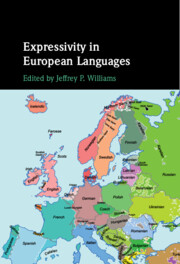1 - Introduction
Published online by Cambridge University Press: 24 August 2023
Summary
This chapter introduces the topic of expressivity and outlines the contributions to the book.
- Type
- Chapter
- Information
- Expressivity in European Languages , pp. 1 - 10Publisher: Cambridge University PressPrint publication year: 2023



